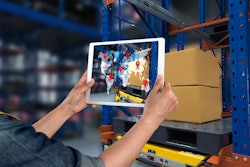
If the COVID-19 pandemic has taught organizations anything, it has been to quickly pivot to the changing demands of markets and leverage new technologies to gain maximum visibility. But how can the system evolve to allow predictive suggestions for resolving real-time problems? How can we use cognitive technology to build a cognitively connected supply chain? The questions are not simple, but the answer is. So, before we dwell on the solution, let's get a hold of the challenges.
Traditional supply chain lacking customer centricity
Traditional enterprise resource planning includes long-affiliated companies with direct customers and vendors, limiting partner reach. Considering the growing digital transformation, consumers today demand enterprises to establish a relationship beyond direct partners.
Consumer behavior and business network are not in touch.
Since the pandemic, more than 60% of global consumers have changed their purchases to improve convenience and value. This demand fragmentation driven by online growth hinders predicting the scale of success for the supply chain.
Data silos delaying critical action
Around three-quarters of critical pertinent data are external, which leads to data silos. And data that goes unshared or unreviewed across systems leads to poor supply chain planning, high integration cost, and delaying critical action. Therefore, having distributed data with flexible acquisition models need to be adapted for real-time visibility.
How is cognitive supply chain the answer?
Around 86% of outperforming supply chain executives believed that cognitive computing would transform their demand planning and forecast capabilities.
Hence, supply chain executives aggressively induce AI combined automation across all industries to augment and enhance operational excellence decision-making. Applying AI and Machine Learning algorithms to massive operational data leads to tracking and predicting supply chain disruption and providing a new level of visibility in daily operations.
Click here to hear more about AI in the supply chain:
The benefits are vast, and such value networks will be inclined towards a common goal of transitioning from shipment demand-based forecasting to real-time demand signals.
For instance, a multi-billion-dollar clothing company with iconic brands and a legacy of over 150 years operates in over 3000 brand-dedicated stores globally. To strengthen their position as a leading omnichannel retailer, they focused on consumer experience by emphasizing data-driven decisions. Gaining access to their wholesale network data was a key growth area. To accomplish this, they set up unified processes to collect secondary data for insights, and it enabled 99% of first-time-right secondary sales data by harmonizing data from disparate sources.
Benefits to manufacturers and retailers
Get it right, and benefits are legion. For sellers, the convenience of customer discovery is pivotal. Using machine learning algorithms, manufacturers and retailers can tune the supply chain based on customer likeliness to the products.
On the other hand, they can also utilize predictive analytics to go through large transactional datasets to identify patterns and recommend solutions. It, in turn, adds value to risk mitigation, spend analysis, and global logistics distribution. These are now real benefits - unimaginable till just recently.
Technological considerations
It all begins with data. Multi-enterprise business networks on cloud infrastructure - either public or private. Success depends on the ability of the network to drive interoperability versus integration. It warrants typical data architecture and seamless integration. Intelligent automation solutions pull together diverse unstructured data within the company and enable seamless integration leading to robust decision-making.
A glimpse of the future with a networked supply chain
Connected intelligence enables networks to inherently build resilience in their participants' supply and demand functions. By democratizing data access and technology and promoting commercial consumer-based user experiences, the cognitive supply chain enables businesses to interoperate live. Through data integration from the entire ecosystem, use cases demonstrate how data can deliver exponentially higher value.
For instance, another organization quickly acquired data and actionable insights from their distributors, leveraging a collaborative demand network fulfilment platform. This organization was the world's premier international brewer with a portfolio of over 300 International, regional, and specialty beers and ciders. The result improved distributor data accuracy by between 40-and 50%. Following this, stock-out scenarios were reduced by 15-20%, and case fill rates improved by 8-10%.
The visibility provided by the platform's dashboard helps businesses create alternate sources of supply. Overall, the goal is to support the roadmap, communicate the AI and cognitive agenda and strive for more outstanding supply chain excellence.



















